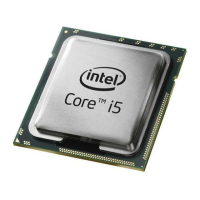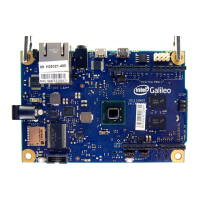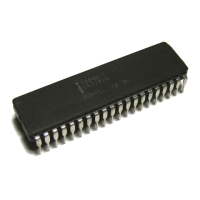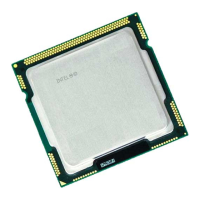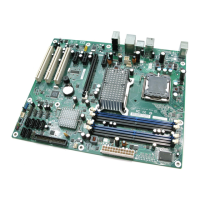Errata
56 Specification Update
Implication: When this erratum occurs in an HT Technology enabled system, it may cause a
system hang.
Workaround: BIOS should initialize the second thread of the processor supporting Hyper-
Threading Technology prior to STPCLK# assertion. Additionally, it is possible for the
BIOS to contain a workaround for this erratum.
Status: For the steppings affected, see the Summary Tables of Changes.
70. Store to Load Data Forwarding May Result in Switched Data Bytes
Problem: If in a short window after an instruction that updates a segment register has
executed, but has not yet retired, there is a load occurring to an address, that
matches a recent previous store operation, but the data size is smaller than the size
of the store, the resulting data forwarded from the store to the load may have some
of the lower bytes switched.
Implication: If this erratum occurs, the processor may execute with incorrect data.
Workaround: It is possible for the BIOS to contain a workaround for this erratum.
Status: For the steppings affected, see the Summary Tables of Changes.
71. Parity Error in the L1 Cache May Cause the Processor to Hang
Problem: If a locked operation accesses a line in the L1 cache that has a parity error, it is
possible that the processor may hang while trying to evict the line.
Implication: If this erratum occurs, it may result in a system hang. Intel has not observed this
erratum with any commercially available software.
Workaround: None.
Status: For the steppings affected, see the Summary Tables of Changes.
72. The TCK Input in the Test Access Port (TAP) is Sensitive to Low Clock
Edge Rates and Prone to Noise Coupling Onto TCK's Rising or Falling
Edges
Problem: TCK is susceptible to double clocking when low amplitude noise occurs on TCK edge,
while it is crossing the receiver's transition region. TAP failures tend to increase with
increases in background system noise.
Implication: This only impacts JTAG/TAP accesses to the processor. Other bus accesses are not
affected.
Workaround: To minimize the effects of this issue, reduce noise on the TCK-net at the
processor relative to ground, and position TCK relative to BCLK to minimize the TAP
error rate. Decreasing rise times to under 800ps reduces the failure rate but does not
stop all failures.
Status: For the steppings affected, see the Summary Tables of Changes.
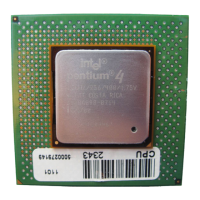
